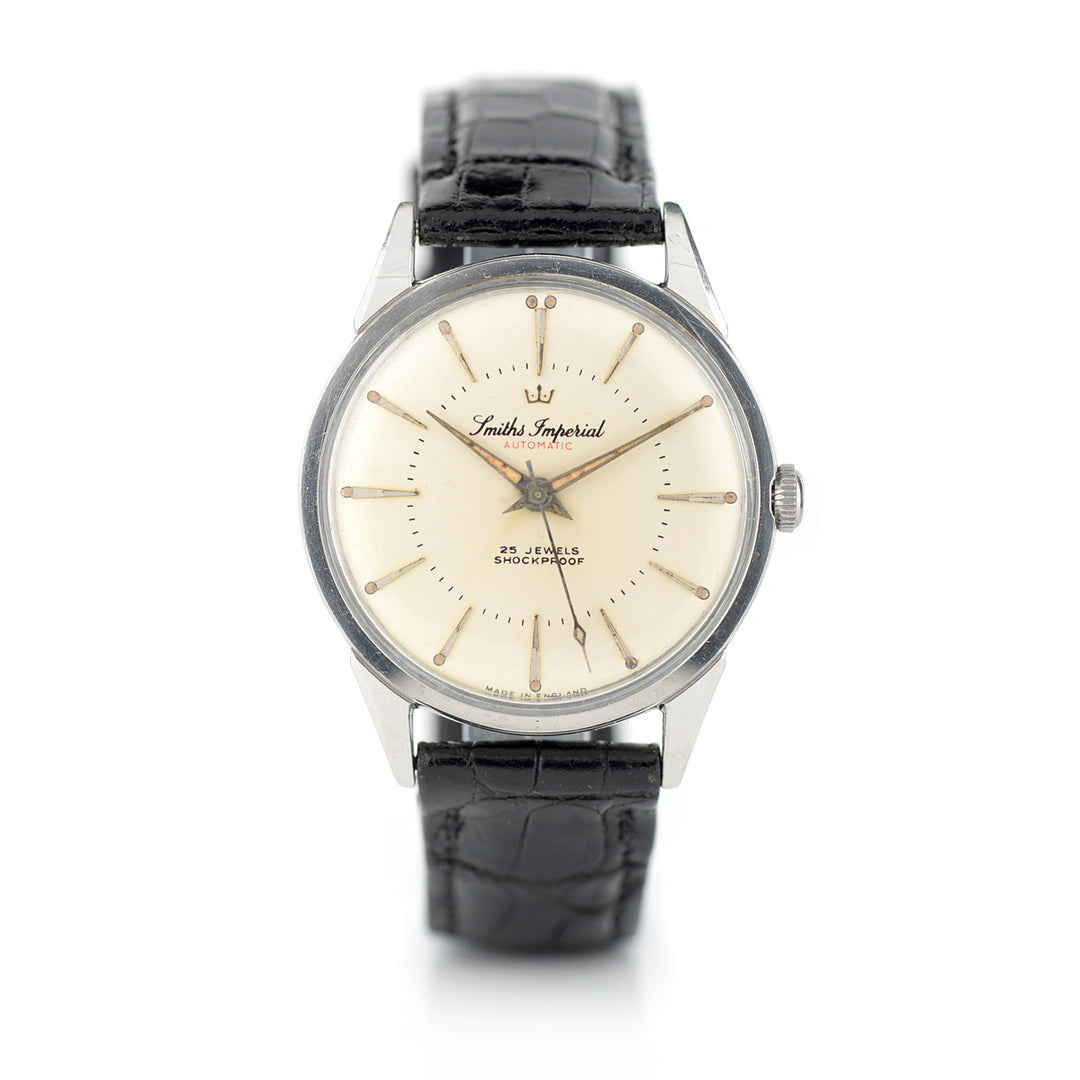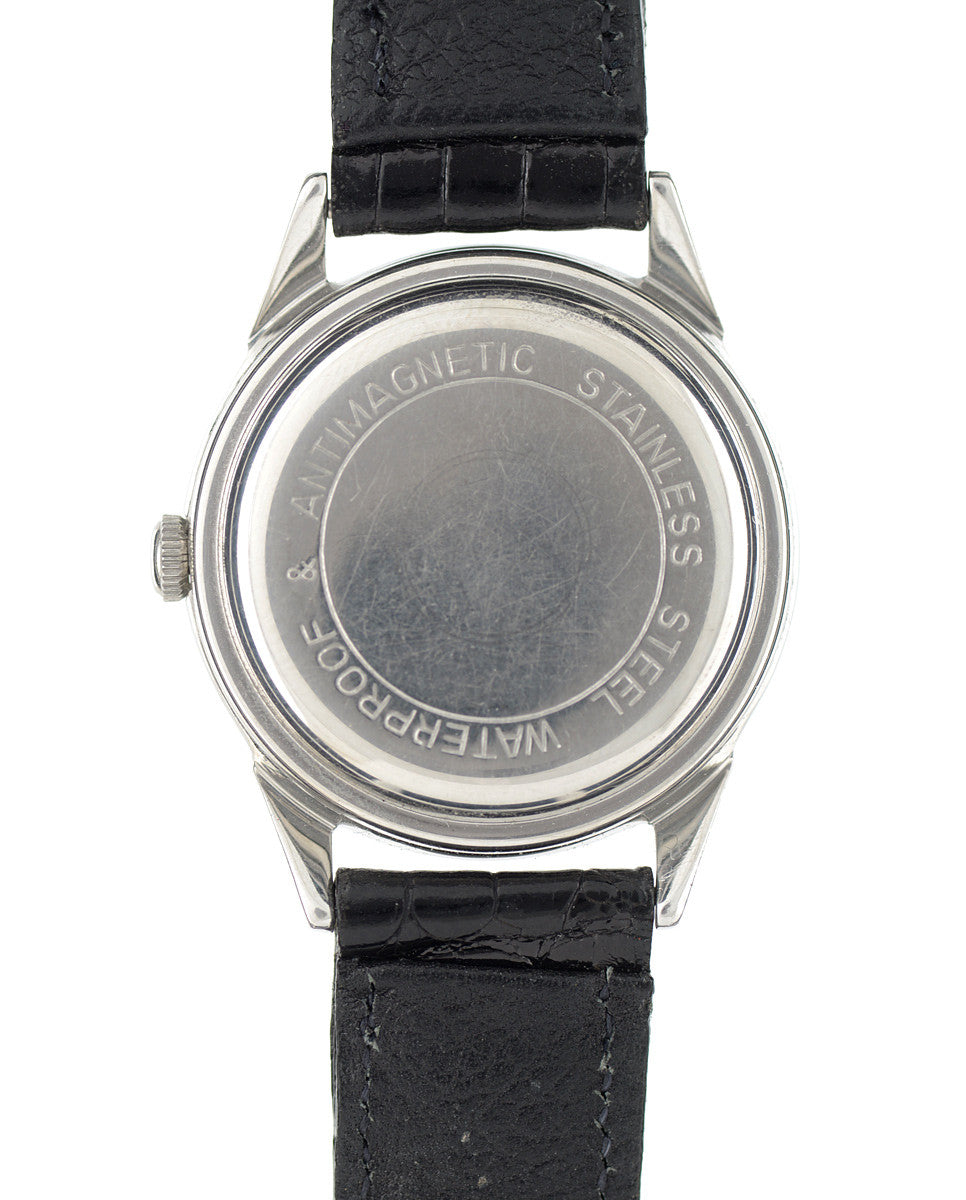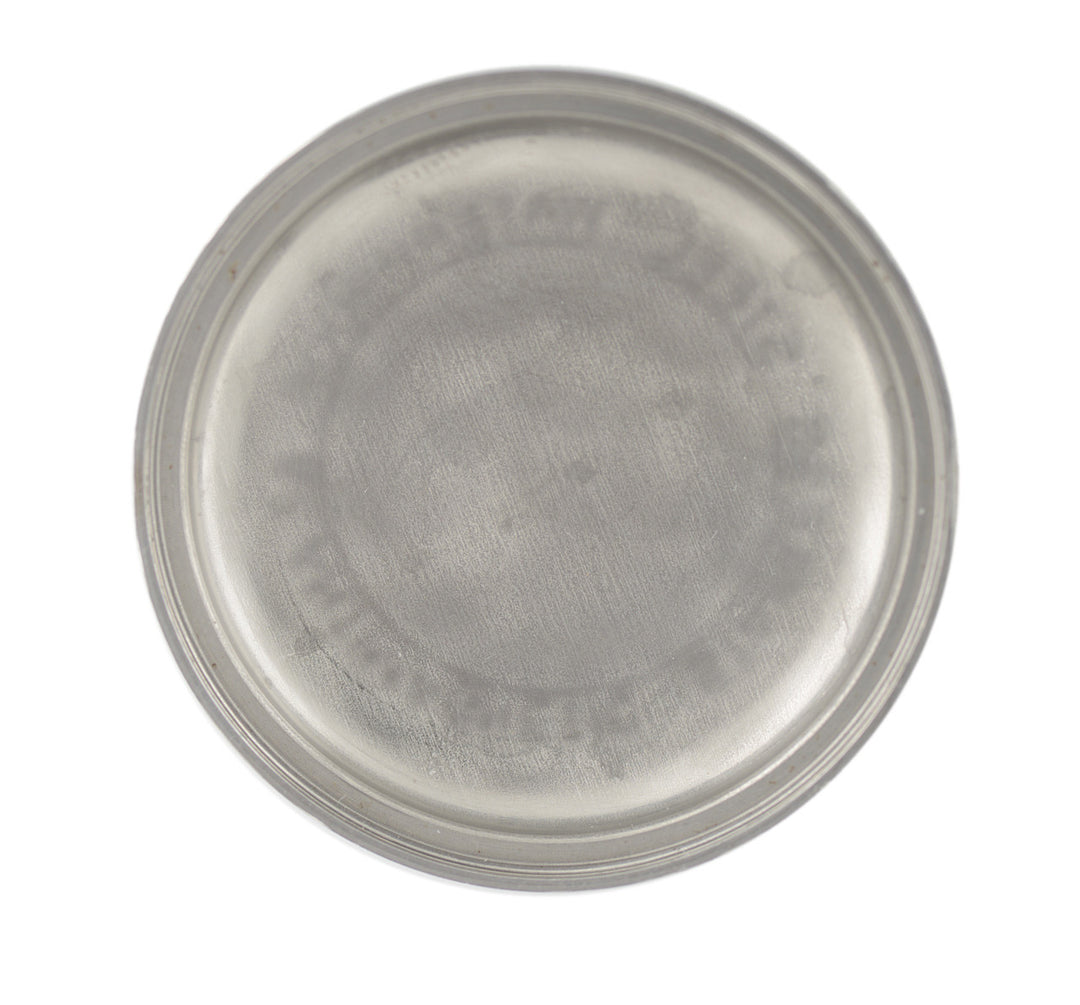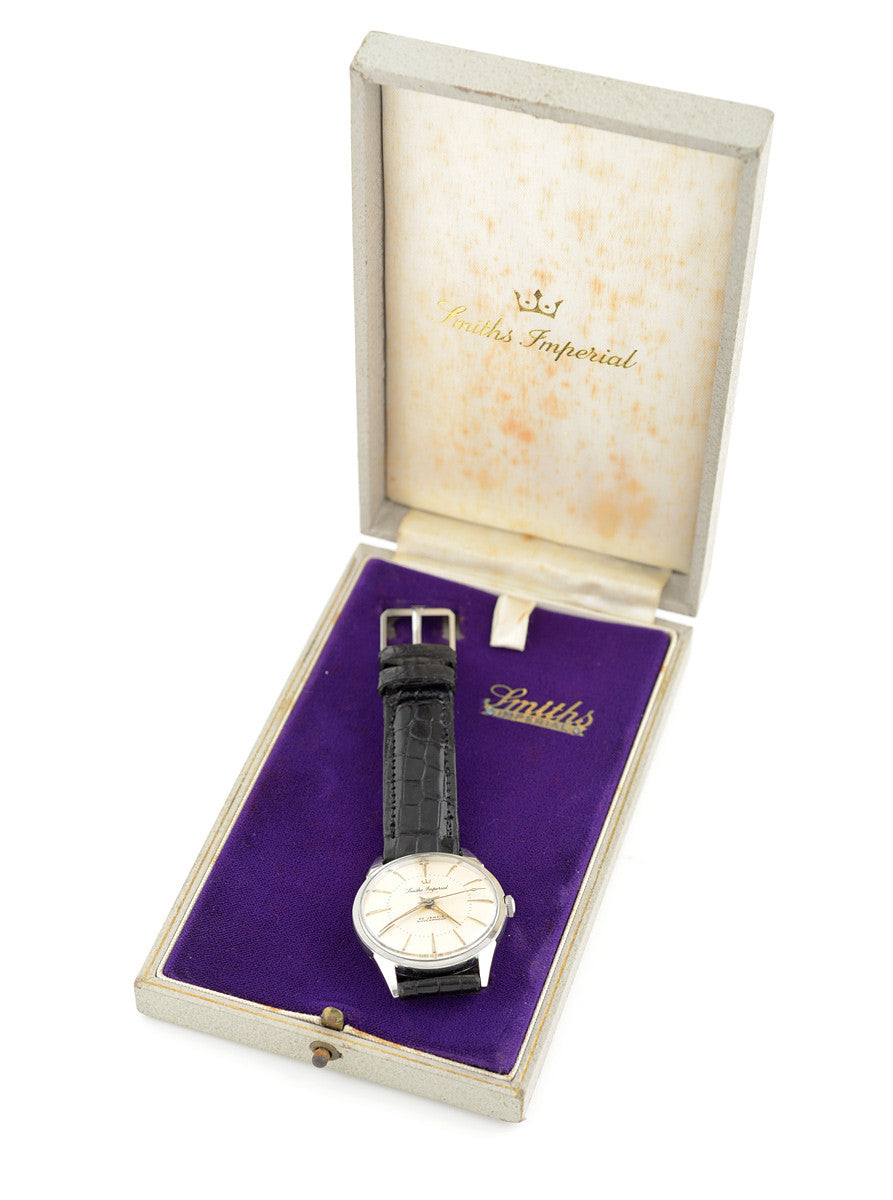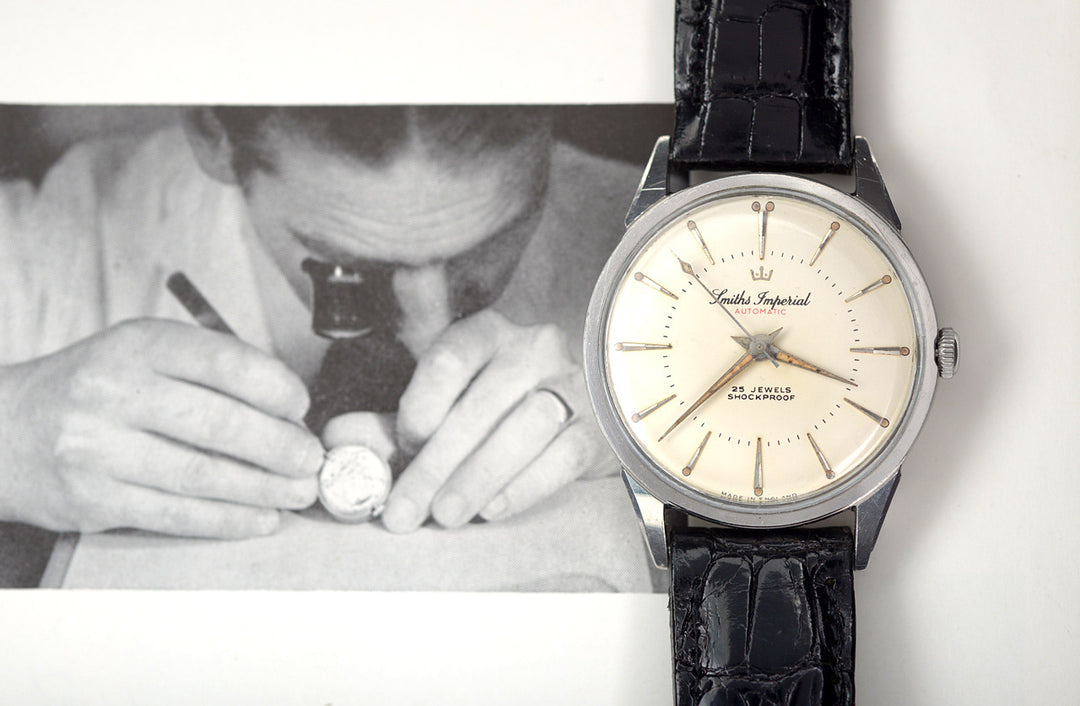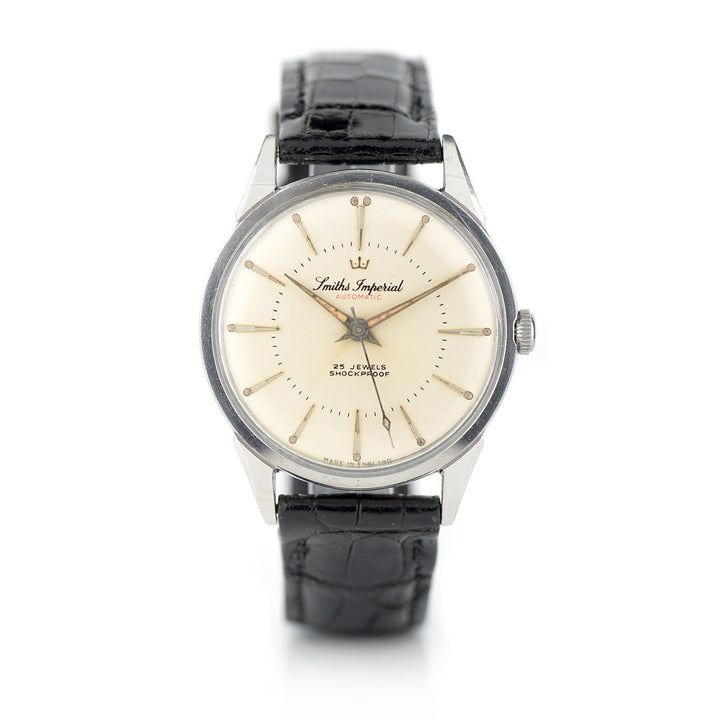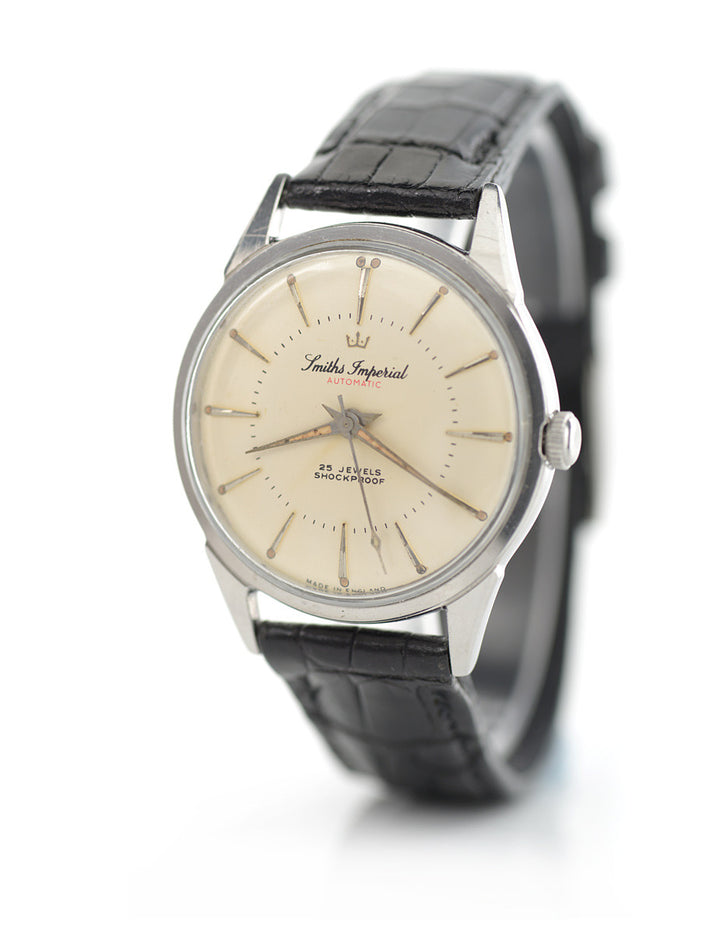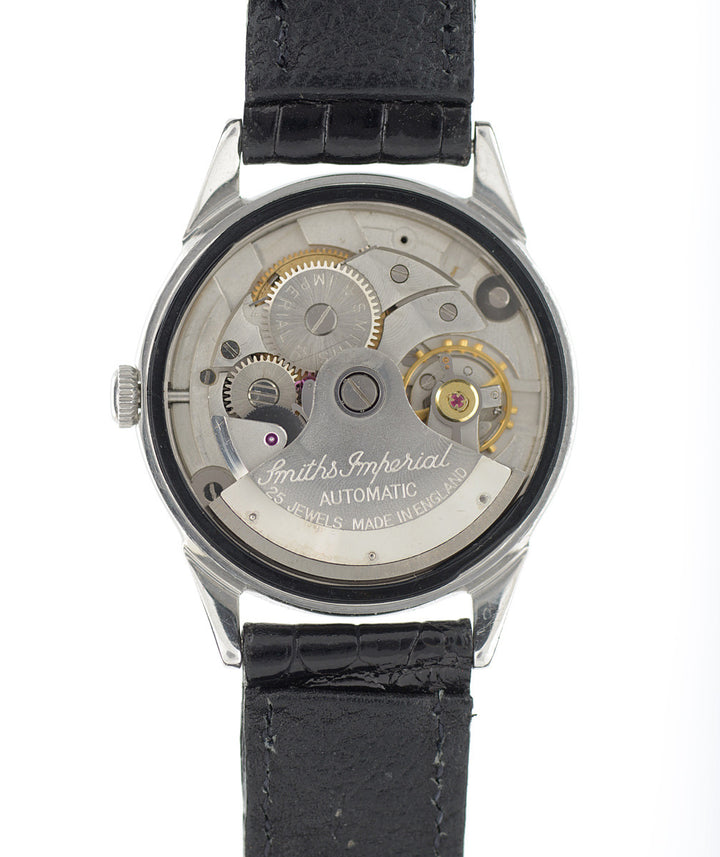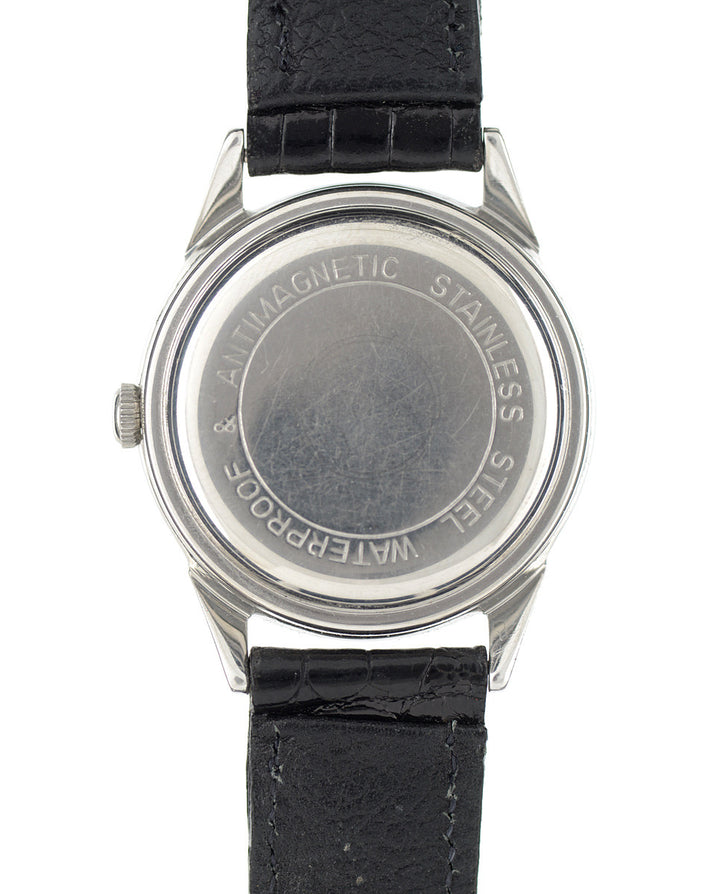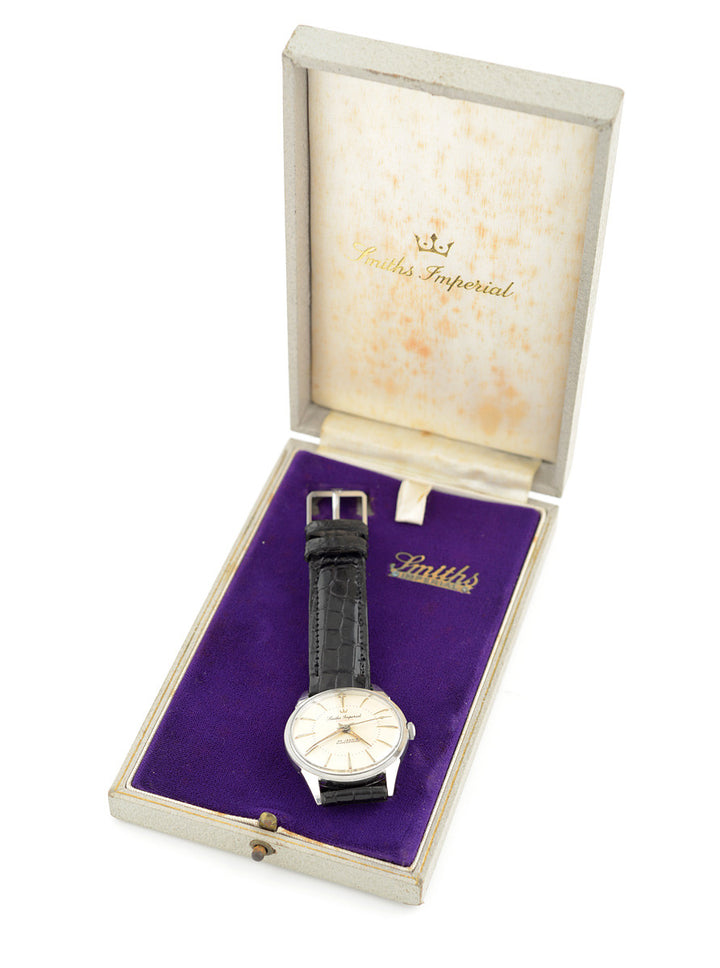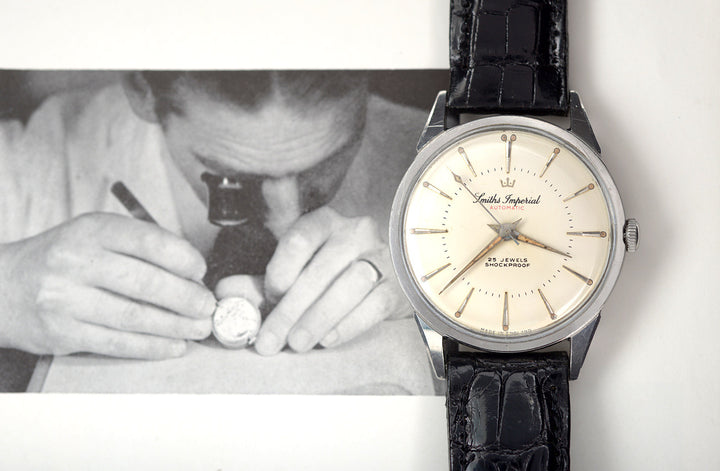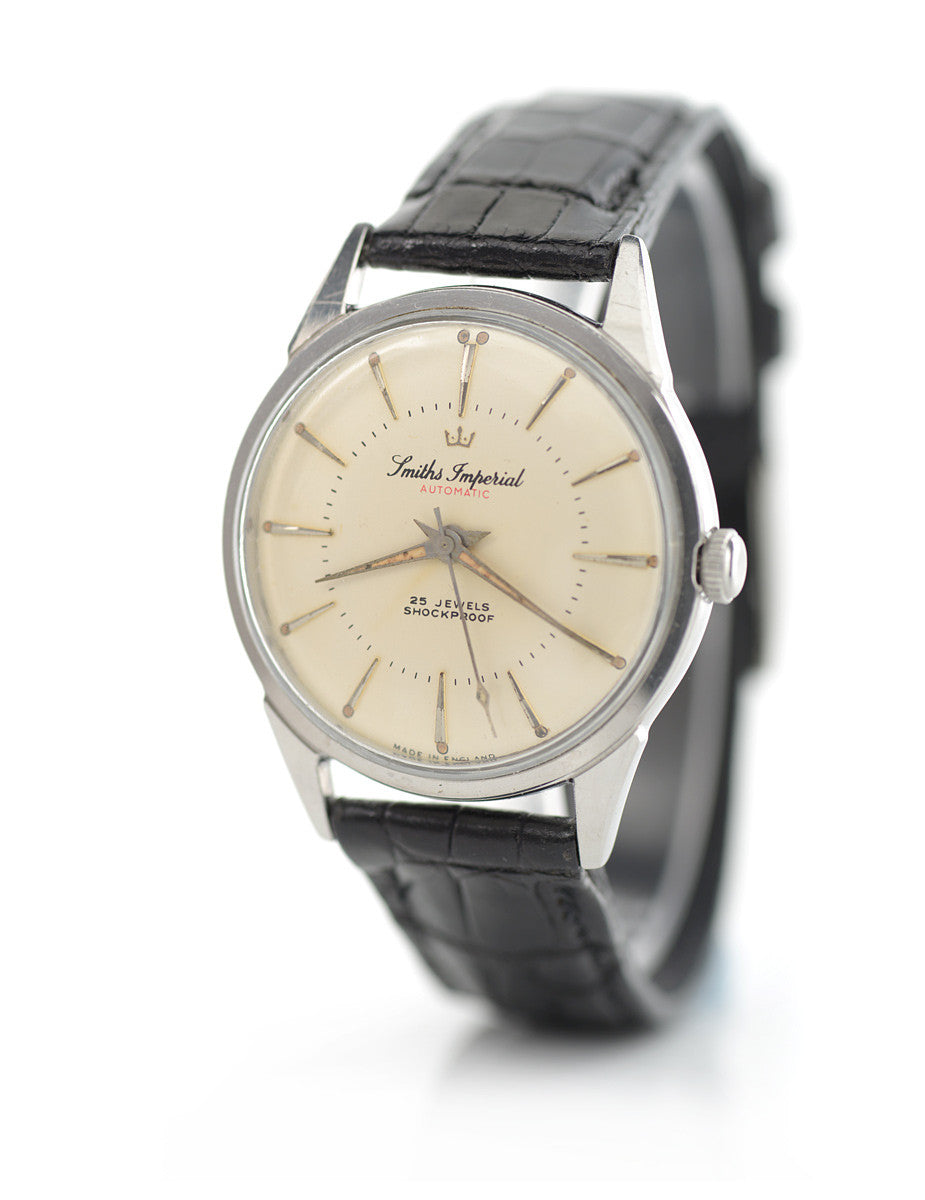Smiths Imperial Automatic
Smiths Imperial Automatic
-
-
- In stock, ready to ship
- Backordered, shipping soon
This is a rare Smiths automatic from 1961 in a stainless steel case. The watch can be dated quite accurately to 1961 because Smiths rebranded the automatic line with the “Everest” name from 1962 onwards. The automatic movement was the apex of technical development by Smiths, indeed Smiths were the only English watchmaker to ever produce an automatic movement. It was developed in the late 1950s in keeping to the widespread adoption of automatic movements by the Swiss watch industry in the post war years.
The cal 104G automatic movement was built on Smiths’ calibre 104 manual wind movement (which was designed from the outset to be adaptable to take an automatic winding module). The automatic winding system was copied from the IWC cal 853 movement, something which got Smiths in trouble for patent infringement. The automatic watch was Smiths’ most expensive model and was produced in either a gold case, gold-pated or rarely in stainless steel as with this watch.
The dial of this watch is in outstanding condition - it has a nice warm tone and the printing of the dial is very clear. The hands are original and are in fair condition - the luminous material is slightly discoloured, but I feel it’s best left as-is to preserve the overall appearance of the watch face.
The watch has been fully serviced and regulated and the time keeping is excellent, it comes with a correct period Smiths Imperial box. It is supplied with a vintage crocodile strap. This is a very rare watch and eminently wearable, perfect for the person who cherishes the tradition of the English-made watch.
Please see vintage watch care advice here.
Specifications:
Case diameter (excluding winding crown): 34mm
Case material: stainless steel
strap width: 18mm
time keeping: grade A
Smiths watches
Smiths were the last English producers of quality watches. Their watches aren't very well known today because it's over 30 years since they stopped manufactire, but the quality of their watches bears comparison with anything the Swiss were producing. Smiths produced a variety of styles of watch for both ladies and gentlemen in chrome, steel, silver and gold cases. The gold cased watches were particularly popular as long-service presentation gifts and the casebacks are often engraved with a presentation inscription. We don't remove these inscriptions as we feel they are an important part of the story of each watch. They developed an automatic movement watch and also were contracted by the British army to produce a wristwatch for general service use (the automatic and the military Smiths are amongst the most sought after and command high prices).
These days we associate the Swiss with high end mechanical watches, but in the 19th century it was English watches that occupied this prestigious position. The Swiss began to compete with the English watchmakers by producing low cost watches. The English were slow to adapt to this new competitor, they took great pride in the relatively small volume of high-quality hand made watches that were produced in England. The Swiss gradually swamped the watch market - beginning with low cost watches, later they produced watches of a comparable quality to the English hand-made watch, but at a lower price. The Swiss developed machine production of watches, this meant that the quality could be kept consistent and replacement parts were interchangeable. Ultimately the English industry couldn't compete and by the early 1930s pretty much all watches were imported.
In the run up to the second world war, the government became concerned that there was no indigenous watch industry left. They turned to S. Smith & Sons who were a long established a watch and clock producer and underwrote the development of a new factory in Cheltenham. Precise timing mechanisms were important for the war in things like bomb timers, as well as more traditional time pieces.
After the second world war, Smiths switched over to civilian production with the first of their watches coming onto the market in 1947. They continued production up until the late 1970s, when they rather suddenly split up the watch and clock division of the company. By this time Smiths Industries was more focussed on civil and military avionics and probably felt that the watches were part of their past. It seems odd that nobody else sought to take over the business as they were clearly profitable, possibly the impact of quartz watches was a factor in their decision to end the business

Smiths cal 0104G


